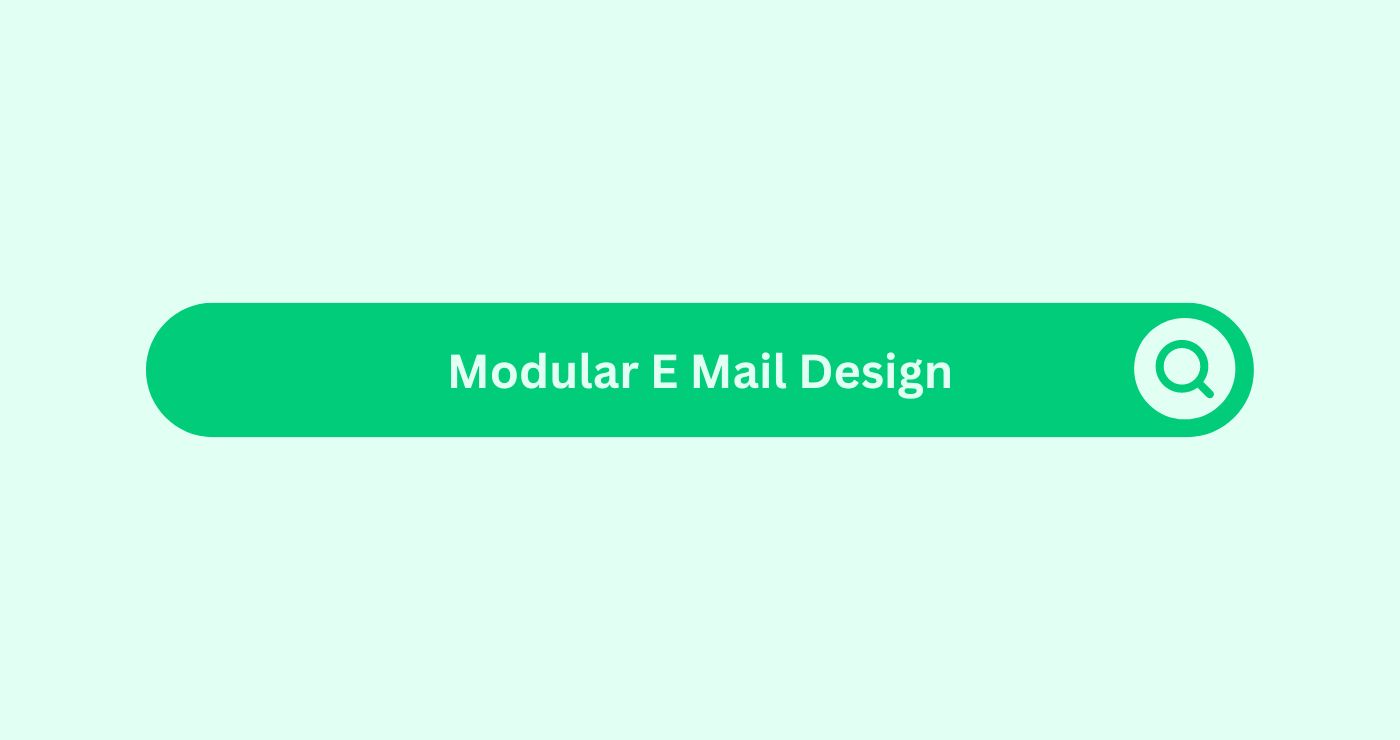Definition
Modular email design in email marketingDefinition
E-mail marketing uses targeted messages t... refers to a flexible design approach where emails are built using a collection of reusable blocks or modules. These modules can include elements like headersDefinition What are headers in e-mail marketing? Headers in ..., footers, image blocks, text blocks, call-to-action buttons, and more. By assembling these predefined modules, marketers can quickly create and customize email templatesDefinition Email templates streamline email marketing effort... without starting from scratch each time. This method ensures consistency across email campaigns, enhances scalability, and speeds up the email creation process. Modular email design is particularly beneficial for maintaining brand identity and adapting to various marketing needs efficiently.
How you can use
Example
Consider a scenario where you need to send out a weekly newsletterDefinition A newsletter in email marketing is a regularly di.... Instead of designing the entire email from the ground up, you can use modular email design. Your design toolkit includes predefined modules like a header, a featured article block, a product showcase block, a call-to-action block, and a footer. Here’s how the process might look:
- Header Module: Contains the brand logo and navigation links.
- Featured Article Block: Includes an image, headline, summary, and a “Read More” link.
- Product Showcase Block: Features product images, descriptions, and “Buy Now” buttons.
- Call-to-Action Block: Encourages readers to sign up for a webinar or download a resource.
- Footer Module: Contains contact information, social mediaWhat is Social Media? Social media refers to online platform... links, and an unsubscribe linkDefinition Including an unsubscribe link in marketing emails....
By combining these modules, you can quickly assemble a newsletterDefinition A newsletter in email marketing is a regularly di... that maintains consistent branding and layout:
htmlCopy code<!DOCTYPE html>
<html>
<head>
<style>
/* Styles for the email */
</style>
</head>
<body>
<!-- Header Module -->
<div class="header">
<img src="logo.png" alt="Brand Logo">
<nav>
<a href="#">Home</a>
<a href="#">About</a>
<a href="#">Contact</a>
</nav>
</div>
<!-- Featured Article Block -->
<div class="featured-article">
<img src="article.jpg" alt="Article Image">
<h2>Article Title</h2>
<p>Article summary goes here...</p>
<a href="#">Read More</a>
</div>
<!-- Product Showcase Block -->
<div class="product-showcase">
<img src="product.jpg" alt="Product Image">
<h3>Product Name</h3>
<p>Product description...</p>
<a href="#">Buy Now</a>
</div>
<!-- Call-to-Action Block -->
<div class="call-to-action">
<p>Sign up for our webinar!</p>
<a href="#">Register Now</a>
</div>
<!-- Footer Module -->
<div class="footer">
<p>Contact us: [email protected]</p>
<p><a href="#">Unsubscribe</a></p>
<p>
Follow us:
<a href="#">Facebook</a>
<a href="#">Twitter</a>
</p>
</div>
</body>
</html>
Benefits
- Efficiency: Quickly assemble emails using pre-built modules.
- Consistency: Maintain a uniform look and feel across all emails.
- Scalability: Easily adapt modules for different campaigns and purposes.
- Customization: Flexibly rearrange and customize modules to suit specific needs.
- Brand Identity: Ensure consistent branding in every email sent.
Formulas and Calculations
While there are no specific formulas for modular email design, creating a library of reusable modules involves planning and design strategy. Ensure that each module is versatile and can be easily integrated with others. Tools like Adobe XD or Sketch can help in designing these modules, while email builders like BEE Pro or Stripo can aid in their implementation.
Key Takeaways
- Streamlined Creation: Rapidly create emails by assembling pre-designed modules.
- Consistent Branding: Maintain brand consistency across all email communications.
- Adaptability: Easily modify and adapt modules for various email types.
- Efficiency: Save time and resources with reusable design blocks.
- Enhanced Collaboration: Simplifies collaboration among team members by using standardized modules.
FAQs
What is modular email design in email marketing?
Modular email design in email marketingDefinition
E-mail marketing uses targeted messages t... involves creating emails using a set of reusable design blocks or modules.
Why is modular email design important in email marketing?
It streamlines the email creation process, ensures consistency, and allows for easy customization.
How can I implement modular email design in my campaigns?
Design a set of reusable modules for different email componentsDefinition Components in the SEO space refer to the individu... and assemble them as needed.
Will modular email design affect the appearance of my emails?
No, it enhances the appearance by ensuring a consistent and professional look.
Can modular email design improve email efficiency?
Yes, it significantly reduces the time needed to create and customize emails.
Is modular email design suitable for all types of emails?
Yes, it can be adapted for newsletters, promotional emailsDefinition Promotional emails are a cornerstone of email mar..., transactional emails, and more.
What tools can help with modular email design?
Design tools like Adobe XD or Sketch, and email builders like BEE Pro or Stripo are useful.
How do I ensure consistency in modular email design?
Use a predefined set of modules that adhere to your brand guidelines.
Can modular email design help with A/B testing?
Yes, you can easily swap out modules to test different versions of an email.
Is there a learning curve for modular email design?
There may be an initial learning curve, but the long-term efficiency gains are significant.




